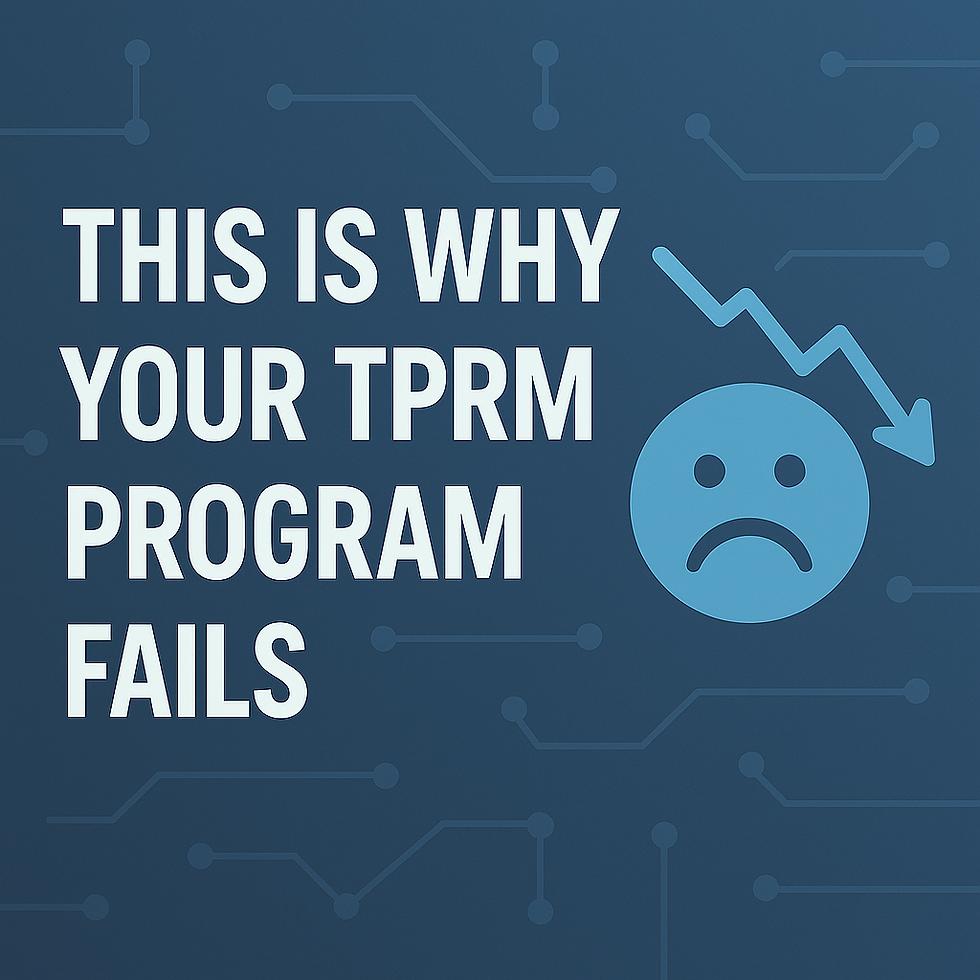The Dangerous Assumption: Security Sign-Off = Privacy Compliance
- Corina
- Jul 27
- 4 min read
Security assessment is NOT a privacy assessment!

Security assessment is NOT a privacy assessment! I repeat. Security assessment is NOT a privacy assessment!
It is a mistake I keep seeing, even in organizations that think they have a mature third-party risk program. They treat privacy as just another category of security. They assume that if security signs off, privacy is covered. They lean on encryption, access controls, pen test, and SOC 2 reports as evidence that privacy risks have been addressed.
But privacy is not a subset of InfoSec. Privacy and security overlap, but they are not the same thing, and confusing them leaves organizations exposed.
This confusion shows up everywhere. Vendor reviews that ask about encryption protocols but skip questions about purpose limitation or whether the vendor shares data with ad networks. Security reviews that might briefly document where data is stored or whether sensitive data is processed, but rarely address the privacy questions that matter for vendor management, such as whether the vendor can reuse your data, rely on subprocessors, or how they handle international data transfers. Security assessments that dig deep into system architecture but never ask what kinds of personal data are processed, whether unnecessary data is collected, or if the vendor’s technology actually supports opt-outs required by law.
A real privacy-aware TPRM review also helps determine whether a DPIA or Transfer Impact Assessment (TIA) is triggered under specific laws or jurisdictions. It gives you the information you need to decide what additional privacy controls, safeguards, or contractual provisions are required before onboarding.
Security is about protecting CIA—confidentiality, integrity, and availability of data. Privacy is about lawful, fair, and transparent use of that data. You can have perfect security and still fail privacy if your vendor collects or processes data in ways you did not expect or cannot defend, such as capturing unnecessary data, sharing it with unexpected third parties, or retaining it without clear justification.
This matters because too many programs assume a clean SOC 2 report or ISO 27001 certification means a vendor’s privacy posture is solid. But SOC 2 focuses on security, availability, processing integrity, confidentiality, and privacy only in a very narrow way and it does not map cleanly to GDPR, CCPA, or any other privacy laws. You can pass SOC 2 and still run behavioral ads without proper consent. You can pass SOC 2 and fail to honor Do Not Sell or Share requests under California law.
When privacy is treated as a line in the security checklist, organizations miss key risks. They miss that purpose limitation matters even when encryption is perfect. They miss that an individual’s right to opt out applies regardless of how secure the system is. They miss that lawful processing under privacy laws has nothing to do with technical architecture.
A real privacy-aware TPRM program treats privacy and security as separate but coordinated. It involves privacy professionals asking privacy questions, not just security or procurement teams filling in a generic vendor questionnaire. It uses frameworks that reflect privacy principles, not just technical safeguards.
This means asking vendors what personal data they collect, why they collect it, how they process it, whether they use subprocessors, whether they transfer data internationally, and whether they allow reuse or secondary processing. It means understanding how they retain data, whether they share it with third parties for purposes that could trigger opt-out obligations under U.S. laws, and whether their technology allows your organization to meet its own legal requirements. And to get a basic understanding of your vendor’s privacy program.
And you would be surprised how often vendors claim they are GDPR compliant and assume that means they automatically meet U.S. privacy laws like CCPA, Washington My Health My Data Act, HIPAA or Quebec Bill 24. But these laws have different definitions, different scopes, and different thresholds. A vendor’s GDPR compliance does not make them compliant everywhere.
This does not mean privacy and security work in silos. They should work together. Security teams provide critical information about system architecture, controls, and breach readiness. Privacy teams focus on vendor practices, contractual obligations, data flows, and legal requirements.
But these are different lenses on the same vendor. If your TPRM program assumes that privacy risk is covered because your InfoSec team signed off, you have a gap and that gap is not theoretical. It is where regulators, litigators, and individuals will look first when something goes wrong.
If you want to fix this, start by mapping your review questions. Which ones are security-focused? Which ones are privacy-focused? Do your reviewers understand the difference? When a vendor pushes back, do you know which risks can be mitigated through technical controls versus which require contractual or governance safeguards?
Privacy is not a checkbox under security. It is a distinct discipline with its own risks, questions, and frameworks. If you keep confusing the two, you are not managing privacy risk. You are hoping your security posture will protect you from privacy failures. It will not.
And if you don’t fix this, it is only a matter of time before you come to a realization that you created a problem you can’t explain away.


Comments